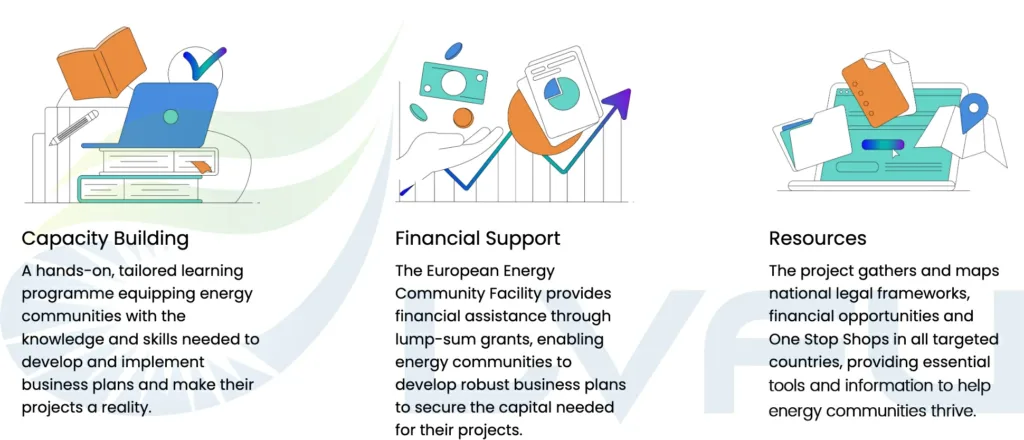LVFU battery learned that the European Energy Communities Facility was officially launched at the headquarters of the European Parliament in Brussels on March 26, 2025, supporting EU energy transition.
The program is led by the European Union and aims to promote the development of at least 140 energy communities through financial support and capacity building, and accelerate the transformation of the EU energy system towards decentralization and democratization.

*Energy communities: Citizen-led legal entities operating in the field of renewable energy and energy efficiency. They differ from traditional energy suppliers in the way they operate –they prioritize environmental, economic or social community benefits over profit.
The plan will build a bridge between EU institutions and local initiatives based on a national dedicated network to ensure that policies and resources can be effectively implemented. Tadhg O’Briain, Deputy Director-General of the European Energy Directorate-General, stressed that the mechanism not only provides funding, but also hopes to “incubate projects that were originally difficult to implement” and generate a multiplier effect through knowledge sharing to promote the replication and expansion of more community energy models.
Energy Community Case Sharing
Torreblanca is a neighborhood in Seville, Spain, with more than 18,000 residents and the fourth poorest area in Spain. In 2019, volunteers from the Som Energía energy cooperative launched a community energy initiative here to help local residents combat energy poverty through renewable energy projects and energy education programs.
Existing barriers: information, regulations, financing
Although the European energy community model has made some progress, citizens and local governments still face three obstacles in promoting such projects:
- Potential participants lack clear guidance and find it difficult to establish and operate energy communities.
- EU policies are not unified, and some member states have legal restrictions that hinder large-scale development.
- The cost of starting and operating the project is high, especially for small communities that find it difficult to obtain sufficient financing support.
Politicians call for strengthening legislation and financial protection
Paulo do Nascimento, MEP of the European People’s Party, pointed out that in the context of the current geopolitical turmoil, decentralized energy systems are crucial to Europe’s energy security, and energy communities are the drivers of this transformation.
Michael Bloss, a member of the Green Party, suggested that energy communities should be included in the EU public procurement and competition law system and targeted support should be provided in the next round of the EU budget.
Dario Tamburrano, a member of the Left Party, stressed that the EU needs to fully implement the “Clean Energy Package” adopted in 2019 and truly give citizens the opportunity to participate in the energy transition.

Practical experience: ensuring that funds are truly implemented
During the practical sharing session of the event, several energy community representatives emphasized the importance of collaboration between the government and local networks. They pointed out that many public funds failed to benefit the actual implementers due to complex processes or difficulty in obtaining information.
Therefore, an efficient resource docking mechanism needs to be established in the future to ensure that funds and support policies can truly help community energy projects.
The plan is expected to inspire more citizens and communities to participate in the development of renewable energy. Its ultimate effectiveness will depend on whether the EU and its member states can effectively solve information, regulations and funding issues and truly unleash the potential of energy communities.